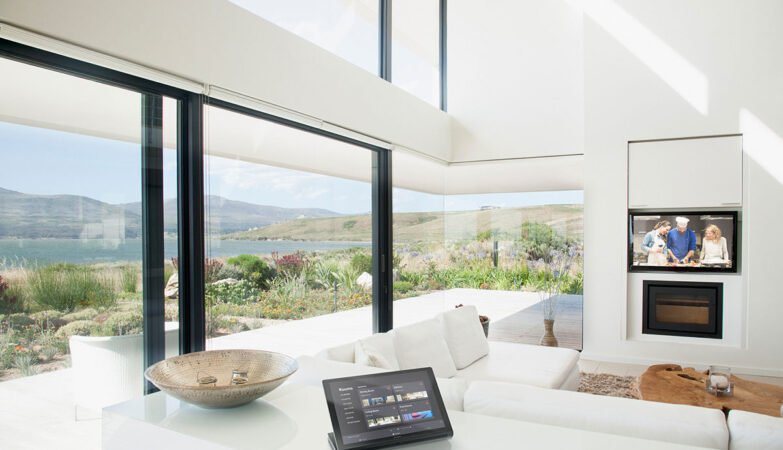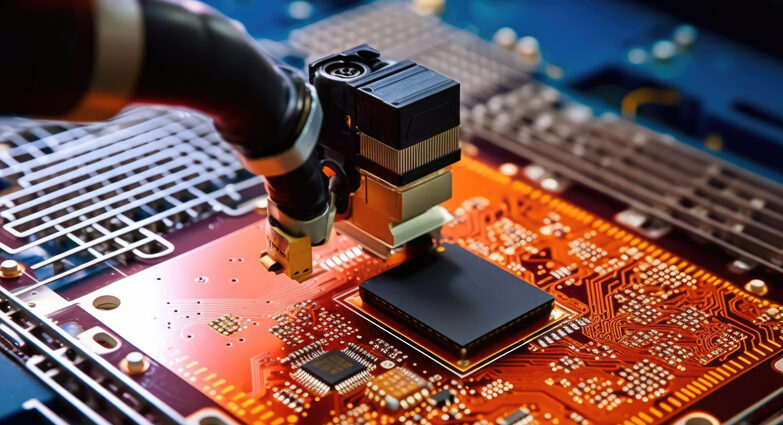As responsible roofing experts, keeping our employees safe is a top priority at Interstate Roofing. Despite the fact that roofing work is a common sight in many neighborhoods, the field can be incredibly hazardous for those who spend their days climbing roofs. In order to keep our employees safe, as well as to give our clients peace of mind, it’s incredibly important that we maintain the strictest safety procedures. With the guidance and regulations from OSHA, we’re able to minimize risk to roofers and rise to the highest industry standards. Here is some of the roof safety equipment we use to stay safe on the job.
Personal Protective Equipment
Personal protective equipment, or PPE, is used in any industry where employees have to work in potentially hazardous situations. In one such as roofing, where power tools or heavy machinery is utilized, it’s vital for the people on-site to be wearing the proper protection in order to prevent injury. No matter how many years of experience a roofer might have, the risk is never low enough to eschew proper protective gear.
Depending on the individual circumstances of a worksite, different kinds of PPE might be needed. Things like nail guns, power saws, or compressed air generators can pose a serious threat of injury. That’s why eye protection, hearing protection, foot protection, and sturdy work gloves are all important for anyone working with or around these kinds of tools. Head protection is also important, as the nature of roofing work puts individuals in danger of falling material or debris.
If there is a chance of harmful fumes or particulate matter being in the air, then an appropriate respirator should also be worn. Finally, high-visibility clothing is never a bad idea, as it allows workers to clearly and easily spot and keep track of each other.
Toe Boards
When working on a roof, it’s crucial that you’re able to move around easily and keep your footing. This can be easier said than done, especially when the roof in question might lie at a steep angle or be made of slippery tiles or shingles. As such, toe boards are one of the most widely used pieces of roofing safety equipment that you will see. These are simple boards or blocks of wood nailed into the shingles or structural supports of a pitched roof. By walking along them instead of the roof itself, workers are able to get to where they need to go without fear of slipping.
Though some might object to the use of toe boards, either due to the fact that they might damage the roof if removed improperly or because of their rudimentary nature, the long track record and low cost have made them a mainstay of the industry.
Guardrail Systems
When protecting workers from fall hazards, there are two general categories of mitigation: fall prevention and fall protection. When it comes to prevention, guardrail systems are an increasingly popular way to go. A guardrail system can be set up around the edge of a roof in order to prevent a worker from falling should their footing slip. By erecting a physical barrier between the roof ledge and the ground below, workers are able to nearly eliminate the risk from fall hazards. In addition to providing a physical barrier, a guardrail system also provides a clear visual marker as to where the fall risk begins and ends. This helps workers be more aware of the boundaries of their workspace, an awareness that can mean the difference between staying safe and slipping.
While there are plenty of options for helping to mitigate fall risk, the simplicity of a guardrail system is a major benefit that can’t be undersold. Since there are no complicated moving parts or mechanisms required for it to do its job, there are fewer ways the system can break or fail to do its job. This also means that workers don’t need to have advanced knowledge of the system in order to operate or inspect it before beginning work. All that is needed is for someone to thoroughly check for any structural damage or weaknesses before starting for the day.
Safety Nets
Safety nets are another kind of roof safety equipment designed to reduce fall hazards. Unlike a guardrail system, safety nets aren’t fall prevention devices. Instead, they offer fall protection. Fall protection doesn’t prevent workers from falling but instead aims to protect them from any serious harm that might result from a fall. It’s another incredibly simple system, and yet its effectiveness cannot be denied.
Now, it’s not as simple as just throwing up any nets you can find and calling it a day. There are specific requirements that OSHA has that govern how the nets need to be hung, the materials they can be made of, how many pounds they can support, and more, but the principle is exactly what you think. The nets can catch anyone who happens to fall off an edge, slowing their fall and preventing serious injury.
In addition to stopping people from falling, a good safety net can also catch any falling debris that might otherwise threaten people on the ground. When something as basic as a net can provide that much protection, it’s easy to see why they’re used today.
Personal Fall Arrest Systems
A personal fall arrest system (PFAS) provides dependable, independent security to each worker on a given job. By wearing a full-body harness attached to an anchor via a lifeline or lanyard, a PFAS can safely decelerate anyone who falls and prevent them from making contact with a lower level. Proper usage is vital to the efficacy of the system, as any errors in securing the system can prevent it from working as intended. The harness needs to be fitted well to its wearer, and the anchor needs to be connected to a point strong enough to support a falling worker. The PFAS should be installed with the supervision of a qualified individual to ensure the safety of those who will be relying on it.
In roofing, risk management is paramount. Armed with all the proper roof safety equipment, we can provide the highest quality roofing work without putting our people in harm’s way. Work with us, and you’ll see the difference.








